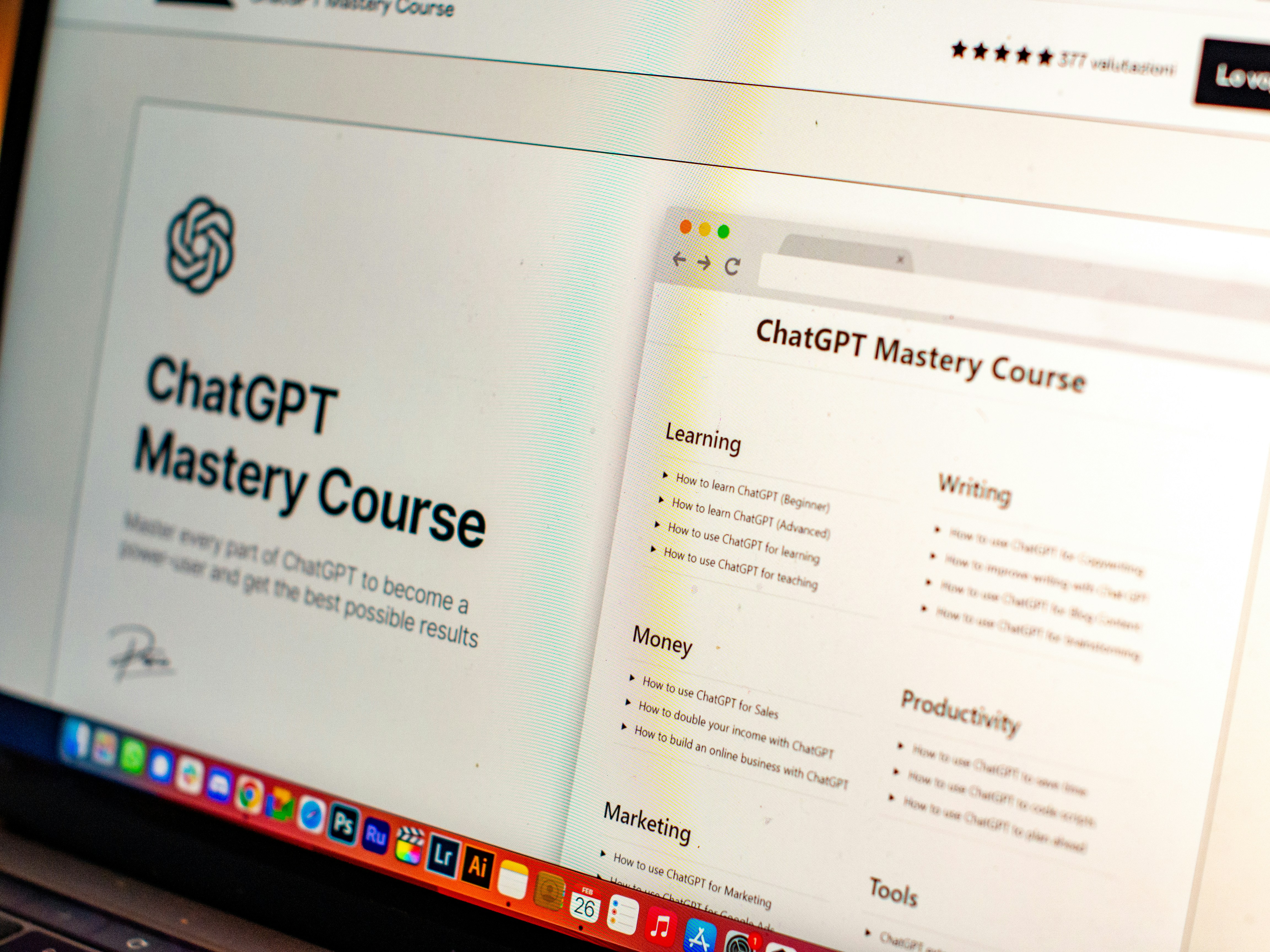Introduction to Accelerated Learning
In today’s rapidly evolving world, the ability to learn quickly and efficiently has become paramount for individuals aiming to remain competitive and adaptable. Accelerated learning refers to a range of techniques and strategies designed to enhance the speed and efficiency of the learning process. As technology, industries, and information continuously change, individuals are increasingly seeking ways to master new concepts swiftly to keep pace with these transformations. The urgency to acquire skills and knowledge rapidly has made accelerated learning a valuable asset.
The benefits of mastering new subjects quickly extend beyond mere academic achievement; they encompass personal development and career advancement. With the workforce becoming more dynamic and multidisciplinary, individuals equipped with efficient learning strategies can pivot more readily, acquire new skills tailored to emerging job roles, and contribute innovatively to their organizations. This ability not only contributes to professional growth but also fosters a sense of personal fulfillment and confidence.
To navigate the complexities of modern learning, various techniques can be employed, each targeting different aspects of the cognitive process. These methods include spaced repetition, the use of mnemonics, visual learning techniques, and active engagement strategies, among others. By implementing these techniques, learners can enhance their retention, comprehension, and application of information. The journey of accelerating one’s learning process requires persistence and adaptability, fostering resilience in navigating the complexities of information intake.
As we delve deeper into this blog post, we will explore each of these techniques and how they can be integrated into everyday learning experiences. By unlocking the potential of accelerated learning, individuals can capitalize on the vast opportunities available to them in both their personal and professional lives, ultimately leading to sustained growth and success.
Understanding Learning Styles
Learning styles refer to the various ways individuals prefer to absorb, process, and retain information. Identifying one’s learning style can significantly enhance the learning experience and foster personal growth. There are four primary types of learning styles: visual, auditory, reading/writing, and kinesthetic.
Visual learners thrive when information is presented through images, diagrams, and charts. They often benefit from visual aids that help them visualize complex concepts. For instance, using color-coded notes or infographics can make retention easier for these learners. In contrast, auditory learners prefer to engage with material through listening. They tend to retain information better when it is discussed in lectures or through group discussions. To assist auditory learners, techniques such as recording lectures or participating in study groups can prove beneficial.
The reading/writing style is characterized by a preference for text-based input. Individuals who excel in this style typically enjoy reading and writing assignments. For these learners, techniques such as summarizing readings or keeping detailed journals can help reinforce the material. Lastly, kinesthetic learners are those who learn best through hands-on experiences. They benefit from physical engagement with the material, such as through experiments, simulations, or other interactive activities.
Recognizing and understanding your preferred learning style is essential for optimizing your educational journey. By tailoring study techniques to suit your learning preferences, you can enhance your ability to absorb and retain information effectively. For example, a visual learner may choose to create mind maps, while an auditory learner might prefer listening to recorded lectures. Overall, acknowledging your learning style enables you to adopt strategies that resonate with your unique approach to learning, ultimately leading to greater personal growth and accelerated development.
The Role of Mindset in Learning
The concept of mindset plays an essential role in the realm of learning and personal development, significantly influencing an individual’s ability to adapt and grow. Psychologist Carol Dweck’s research introduced the distinction between two predominant mindsets: the growth mindset and the fixed mindset. Individuals with a growth mindset believe that their abilities and intelligence can be developed through dedication and hard work. In contrast, those with a fixed mindset view their skills as static and unchangeable, which may limit their potential for growth.
Adopting a growth mindset encourages learners to embrace challenges, persist in the face of setbacks, and view effort as a pathway to mastery. This perspective fosters resilience, ultimately leading to enhanced performance and success. When individuals believe that they can improve through effort, they become more inclined to engage with the learning process actively. They are more likely to take risks and explore new opportunities, which are fundamental components of effective learning and development.
To cultivate a growth mindset, individuals can adopt several strategies. First, it is crucial to reframe negative self-talk and replace limiting beliefs with empowering affirmations. Instead of thinking, “I can’t do this,” one might say, “I can’t do this yet,” which opens the door to future possibilities. Additionally, seeking feedback and viewing criticism as an opportunity for learning rather than a reflection of one’s worth can significantly shift an individual’s outlook.
Moreover, surrounding oneself with growth-oriented individuals can further reinforce a growth mindset. Engaging in discussions with peers who value learning and development can provide inspiration and motivation. Ultimately, cultivating a growth mindset not only enhances personal development but also lays the groundwork for a lifetime of continuous learning and growth.
Effective Time Management Techniques
Time management is a critical component in the journey of learning and personal growth. In a world characterized by numerous distractions, effective time management techniques can aid individuals in maximizing their productivity, facilitating faster learning, and ultimately contributing to personal development. One of the most popular methods is the Pomodoro Technique, which involves breaking work into intervals, traditionally 25 minutes in length, followed by a short break. This technique not only encourages sustained focus but also helps to alleviate mental fatigue, thus enhancing learning efficiency.
Another effective method is time blocking, which involves scheduling specific blocks of time for different activities throughout the day. By designating periods solely for learning, individuals can create an environment conducive to focus and minimize the tendency to multitask. This technique also serves to clarify priorities and allows learners to allocate sufficient time to various tasks without feeling overwhelmed. Following a well-structured timetable encourages progress tracking and provides an opportunity for reflection on how time is utilized.
Prioritization strategies are equally essential in effective time management. Utilizing frameworks such as the Eisenhower Matrix enables learners to categorize tasks by urgency and importance, ensuring that time is first allocated to activities that align with personal growth goals. By distinguishing between essential and non-essential tasks, individuals can focus on their learning objectives and engage in activities that offer the most benefit.
Incorporating these time management techniques into daily routines not only fosters discipline but significantly enhances one’s capacity to learn and grow. By embracing methods such as the Pomodoro Technique, time blocking, and prioritization strategies, individuals can efficiently allocate their time, ultimately unlocking their potential for continuous development.
Utilizing Technology for Enhanced Learning
In an increasingly digital world, harnessing technology can significantly accelerate learning and personal growth. A variety of tools and resources are now available that facilitate efficient methods for acquiring new skills and knowledge. For instance, educational apps such as Evernote and Notion enable learners to organize notes and plan their studies effectively, thus enhancing productivity.
Online courses have gained substantial traction, offering learners the flexibility to access a wide array of subjects at their own pace. Platforms like Coursera and Udemy provide numerous courses from recognized institutions and industry professionals, allowing individuals to delve into new areas of interest or fortify existing knowledge. These platforms often feature a blend of video lectures, readings, and quizzes, catering to various learning styles and preferences.
Additionally, educational podcasts and YouTube channels represent another avenue for enhancing understanding in diverse topics. With content ranging from scholarly discussions to practical advice, learners can absorb information during commutes, workouts, or any time that may not be suitable for traditional study. This forms a convenient method to integrate learning into daily routines without requiring significant time investment.
Adaptive learning technologies also contribute significantly to personalizing education. Programs that utilize artificial intelligence can gauge an individual’s proficiency in specific areas and then adjust educational content accordingly, ensuring mastery before moving on. This personalized approach significantly enhances engagement and retention as it allows learners to progress at an optimal pace tailored to their needs.
By embracing these technological advancements, individuals can create a unique and efficient learning environment that promotes rapid growth and empowerment. The integration of various digital tools not only streamlines the learning process but also encourages a commitment to lifelong education, ultimately unlocking one’s full potential.
Active Learning Strategies
Active learning strategies are essential tools that significantly enhance engagement and promote retention of information. By participating actively in the learning process, individuals can deepen their understanding and accelerate their growth. One effective strategy is teaching others; when one takes on the role of an educator, they are compelled to grasp the material more thoroughly. This method enables learners to refine their knowledge and identify any gaps in their understanding.
Another powerful technique is engaging in discussions. Participating in dialogues or debates encourages critical thinking and allows learners to explore various perspectives on a topic. These discussions, whether in a formal setting or an informal group, enable participants to articulate their thoughts and clarify their understanding by responding to questions and comments from peers. Such interactions foster a collaborative learning environment where insights are exchanged, thereby enriching the educational experience.
Group studies also fall under the umbrella of active learning strategies. When individuals collaborate in small groups, they combine their strengths and share diverse viewpoints. This collaborative approach not only enhances comprehension but also often leads to innovative problem-solving techniques. Team members can motivate one another, leading to a more dynamic and effective learning session.
Hands-on projects represent another vital component of active learning. Engaging with the material through tangible activities or experiments enables learners to apply theoretical concepts in a practical context. This experiential learning solidifies knowledge and makes the learning process more memorable. By actively participating in projects, individuals are likely to retain information better and develop critical skills valuable in real-world applications.
Incorporating these active learning strategies into one’s educational routine can significantly enhance the learning experience, fostering a deeper understanding of the subject matter and promoting faster growth.
Setting Goals and Tracking Progress
Establishing clear goals is an essential step in any learning process, as it provides direction and purpose. One of the most effective frameworks for goal-setting is the SMART criteria. By defining goals that are Specific, Measurable, Achievable, Relevant, and Time-bound, individuals can create a structured pathway for their personal and professional development.
To begin with, specificity is crucial. A specific goal lays out exactly what needs to be achieved, eliminating ambiguity. For instance, rather than stating a desire to ‘learn a new language,’ one could refine this to ‘achieve conversational proficiency in Spanish within six months.’ This refinement not only clarifies the objective but also provides a more tangible target.
Measurable goals allow individuals to quantify their progress, making it easier to gauge development over time. For example, committing to practice Spanish for 30 minutes daily facilitates tracking the amount of time invested in learning. Additionally, integrating tools such as learning journals or apps can aid in maintaining this accountability.
The next component, achievability, ensures that the goals set are realistic given one’s current skill level and resources. Setting overly ambitious targets can lead to frustration, while well-considered goals foster motivation and a sense of accomplishment. For someone starting their learning journey, it may be wise to begin with simpler, foundational concepts rather than advanced grammar.
Relevance reflects the importance of aligning goals with broader life aspirations. Choosing a learning goal that resonates personally increases commitment and enhances engagement throughout the process. Lastly, incorporating a time-bound aspect adds urgency, encouraging progress within a defined period. Deadlines instill discipline and structure, prompting individuals to track their advancements consistently.
In conclusion, developing SMART goals and effectively tracking progress are integral strategies for stimulating growth and fostering a productive learning environment. By implementing these techniques, one can enhance their learning experiences and maximize their potential.
Overcoming Challenges in Learning
Learning can often be impeded by various challenges that individuals encounter throughout their educational journey. Among the most prevalent of these challenges are procrastination, distractions, and the fear of failure. Addressing these issues is essential for anyone seeking to unlock their potential and achieve accelerated growth.
Procrastination is a significant barrier that can derail even the most dedicated learners. It often stems from a lack of motivation or overwhelming feelings about the tasks at hand. To combat procrastination, establishing a structured schedule can be particularly helpful. Breaking down large tasks into smaller, manageable milestones can also reduce feelings of being overwhelmed. Setting specific deadlines for each segment not only fosters accountability but can also enhance motivation as progress is recognized.
Distractions present another formidable obstacle in the learning process. With the prevalence of technology and the abundance of information, learners may find it challenging to maintain focus. To mitigate distractions, it is advisable to create a designated learning environment free from interruptions. This may involve silencing notifications on electronic devices or utilizing applications that block distracting websites. Additionally, employing techniques such as the Pomodoro Technique, which involves focused work sessions followed by short breaks, can help in maintaining concentration and productivity.
Lastly, the fear of failure can hinder one’s learning journey. This fear may arise from a fear of judgment or the pressure to achieve high standards. To overcome this challenge, it is beneficial to reframe failure as a learning opportunity. Embracing a growth mindset encourages learners to view their setbacks as experiences from which to learn and improve. By shifting the perspective towards understanding that mistakes are integral to the learning process, individuals can foster resilience and adaptability.
By implementing these practical strategies, learners can effectively address common challenges, thus paving the way for faster learning and personal growth.
Building a Community of Learners
Engaging with a community of learners can significantly enhance the learning experience, as it fosters collaboration and knowledge sharing. By surrounding oneself with like-minded individuals who share similar goals, learners cultivate an environment conducive to growth and development. Communities can take various forms, from formal educational settings to informal peer groups, each providing unique opportunities for enrichment.
One effective way to build or join a learning community is through local or online study groups. These groups enable participants to discuss ideas, solve problems collaboratively, and hold each other accountable. In addition, online platforms like forums or social media groups dedicated to specific subjects allow learners to connect with a global audience. Here, participants can ask questions, share resources, and receive feedback from peers who may offer diverse perspectives. This network can serve as a vital source of encouragement, providing moral support that can be crucial for success.
Additionally, enrolling in workshops or seminars can expand one’s network and introduce learners to new methodologies and ideas. Many educators and institutions offer such opportunities, which not only facilitate skill enhancement but also encourage community building among participants. Joining professional organizations within one’s field can also be beneficial, as these groups often host events, share research, and promote collaboration among its members.
Moreover, mentorship is an essential aspect of fostering a constructive learning community. Finding a mentor or becoming one can create invaluable learning opportunities. Mentors can offer guidance, share experiences, and provide insights that enhance understanding and retention of knowledge. Through these relationships, learners can not only gain practical skills but also develop essential soft skills such as leadership and communication.
In conclusion, building a supportive community of learners is vital for personal and professional growth. By actively participating in or creating learning networks, individuals can enhance their learning experiences and achieve greater success through collaboration and shared knowledge.



